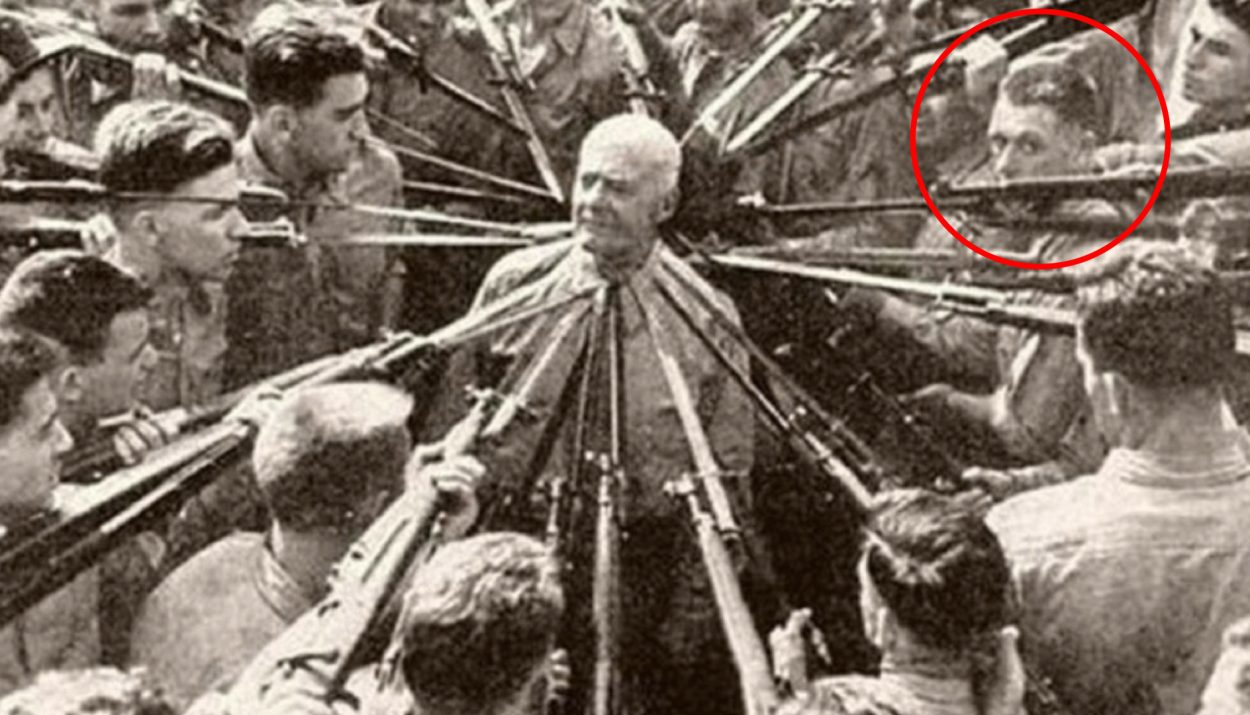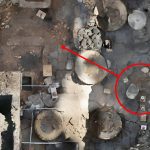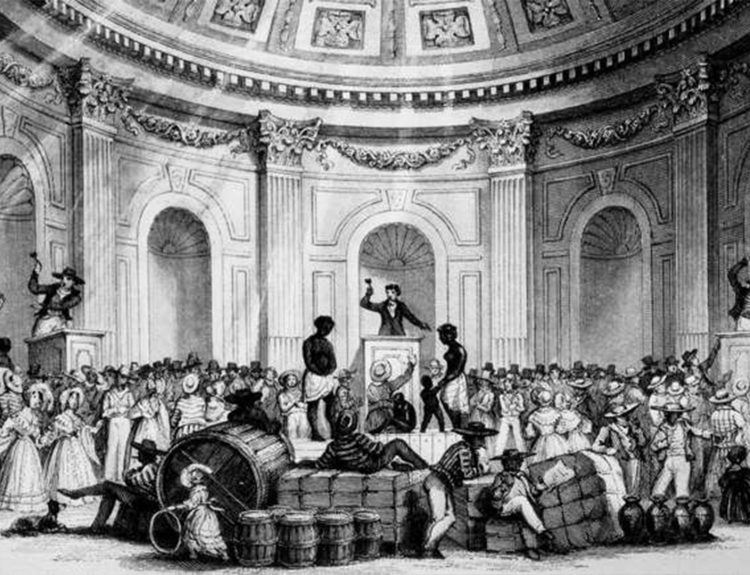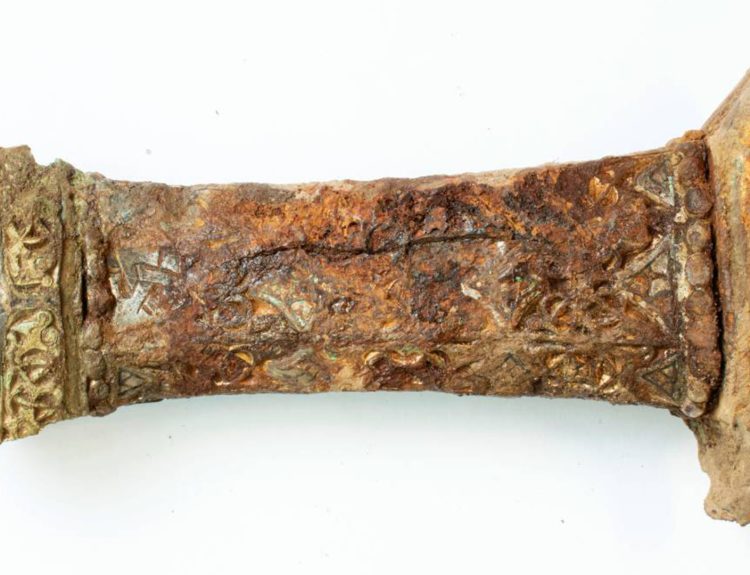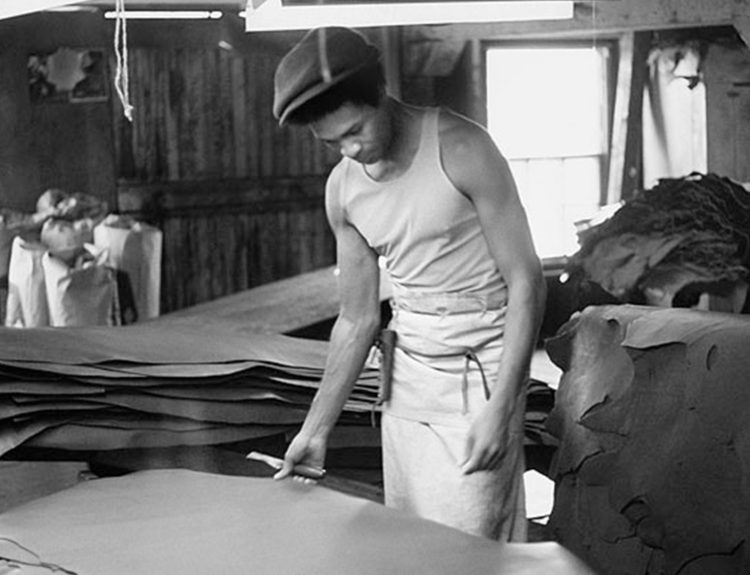Step back in time and take a glimpse at history through these rare and unseen photos. Each one captures a moment in time, providing a unique perspective on the past. From people and places to events and everyday life, these photographs offer a window into history that is not often seen.
Against All Odds: F-1 Pilot Cheats Death with Low Altitude Ejection and Survives with Minor Injuries, 1962
In 1962 an F-1 pilot was seen ejecting from his plane at a super low altitude!
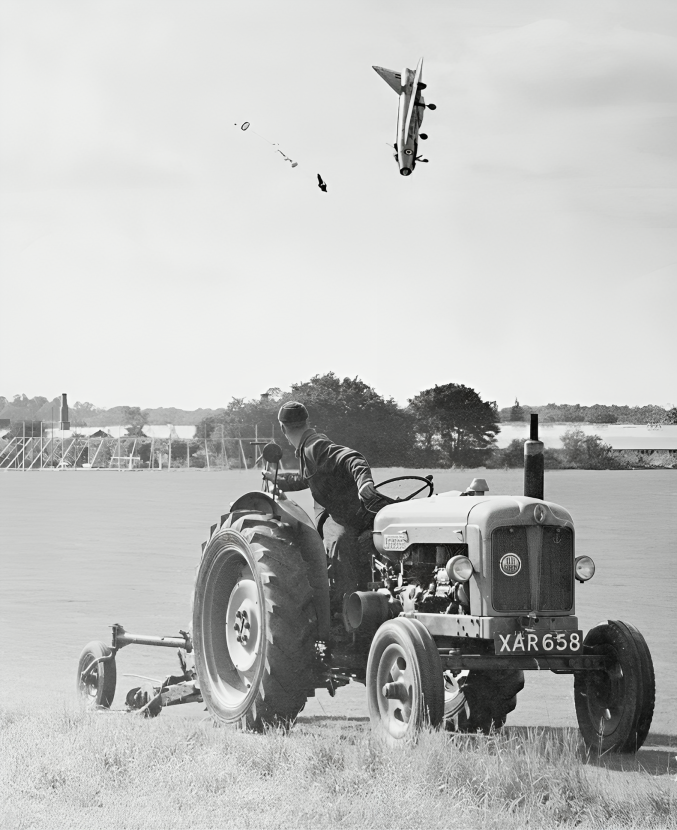
It’s pretty amazing that the pilot was able to survive such a dangerous situation. Ejecting at a low altitude is risky and not many people survive it.
A High Altitude Lunch Break: Charles Ebbets Captures Iconic “Lunch atop a Skyscraper” Photograph in 1932
In 1932, Charles Ebbets had an idea to capture a unique photograph. He climbed to the 69th floor of the GE building and took a picture of construction workers having lunch on a steel beam. This photograph, known as “Lunch atop a Skyscraper,” is now an iconic image that represents the construction of skyscrapers in the early 20th century. The photograph captures a moment in time, showing the workers taking a break from their labor, enjoying their lunch and having a good time, despite the danger of their job.
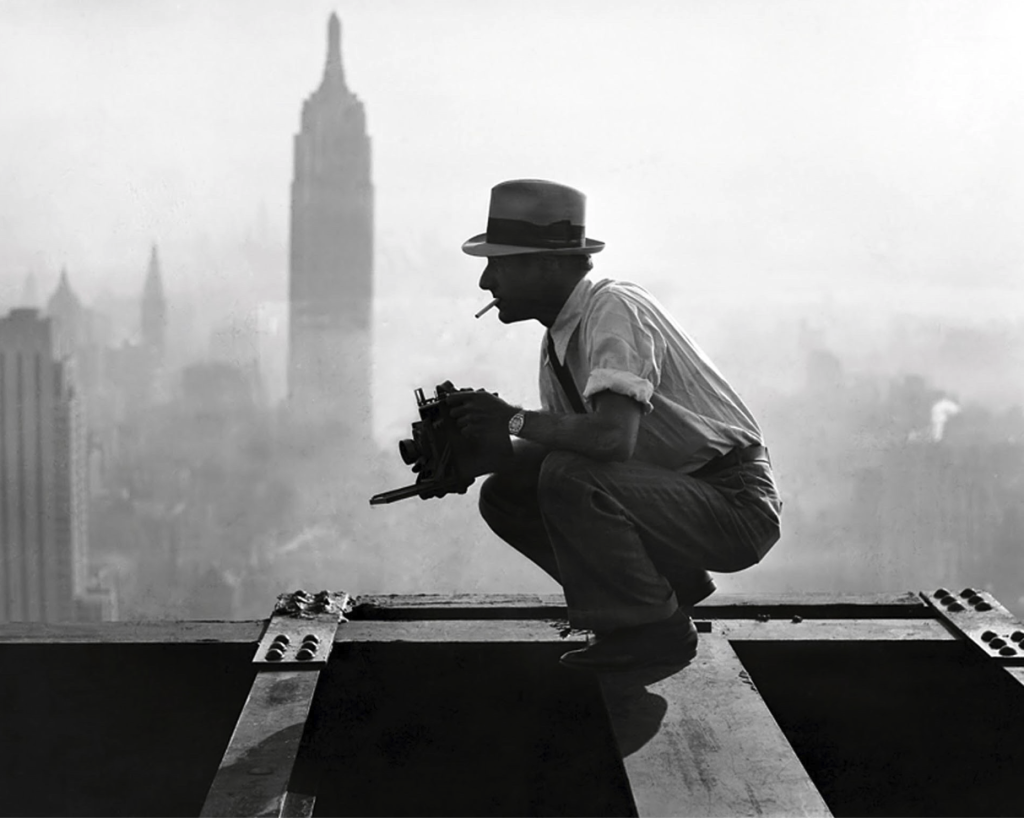
The photograph “Lunch atop a Skyscraper” is not only visually striking but also tells a story about the lives of construction workers during that time period. It captures the spirit of the workers, showing their resilience and camaraderie. It also reminds us of the incredible feats of engineering that were accomplished to build the skyscrapers that are now an integral part of our cities. The photograph is a testament to the hardworking men and women who built the modern world we live in today.
Mortar rounds keep the sky alight during World War I, 1917
This photograph, captured by a British photographer during World War I, shows the intense combat scene of mortar rounds being fired back and forth. It gives us a glimpse of what it was like for soldiers during the war. The photo shows the chaos and destruction caused by the war, and it’s clear that the photographer was in the thick of the action. The photograph gives us a sense of the danger that soldiers faced on a daily basis and the harsh conditions of trench warfare.
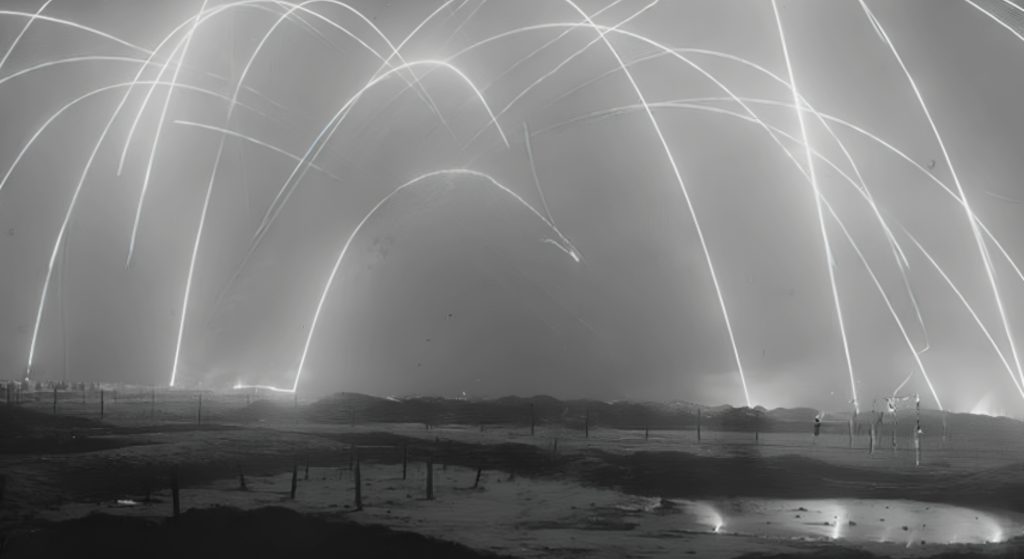
This photograph is a powerful reminder of the sacrifices made by soldiers during World War I. It brings to life the realities of war, and it’s a testament to the bravery and resilience of those who fought in it. It also serves as a reminder of the devastating impact of war on human life, and it’s a powerful call to action to work towards peace and understanding. The photograph is a valuable historical document that brings us closer to understanding the past and its lessons.
A Blast from the Past: Bill Gates’ 1994 CD-ROM Prediction Brings Back Memories
In 1994, Bill Gates said something pretty impressive. He said that a CD-ROM can hold more information than a whole pile of paper! That’s like saying you can fit a whole library on just one little disc. Back in 1994, not many people were using CD-ROMs yet, so what Bill Gates said was a big deal. It meant that computers could store and share lots of information in a really small space.
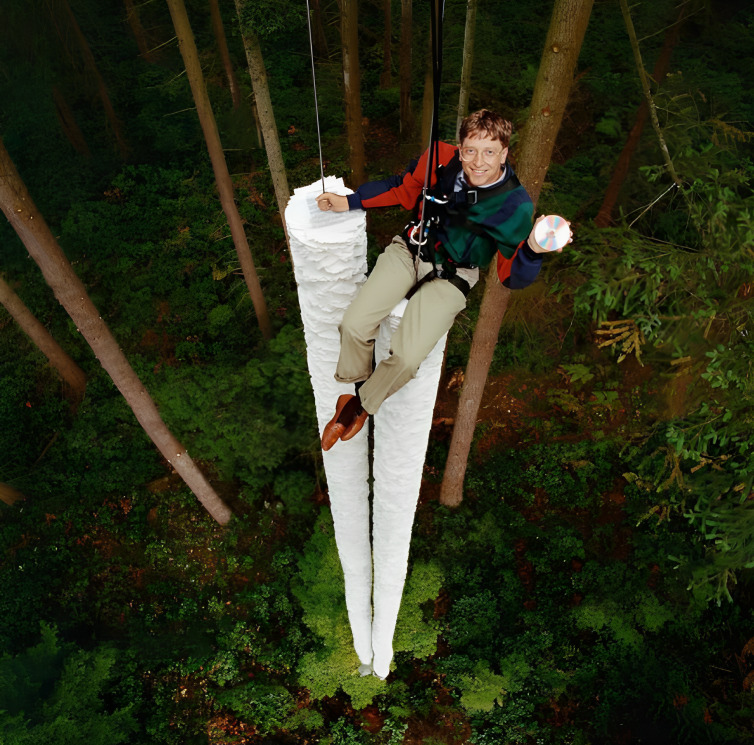
Today, CD-ROMs are barely used at all. It’s amazing to think about how much technology has changed since 1994.
Wormwood Street in Ruins: IRA Bombing Leaves London Streets Devastated on April 24, 1993
On April 24, 1993, London was the victim of a terrorist attack when the IRA detonated a truck bomb on Wormwood Street. The bomb caused significant damage to the buildings and cars in the area. Many people were injured and some even lost their lives.

Terrorist attacks like this one are meant to cause fear and chaos, and they often do just that. It’s important to remember that these attacks do not define a city or a country, and the resilience and strength of the people affected should be celebrated.
Let’s see how you get out of this one! Colonel Anthony Biddle’s Unconventional Training
Colonel Anthony Biddle was a man who did things differently. He was known for ordering his trainees to try to kill him with bayonets. But the crazy part is that he was able to disarm them all! This type of training is not common and some people might think it’s a bit extreme, but Colonel Biddle believed that it was necessary to prepare his trainees for real-life combat situations.
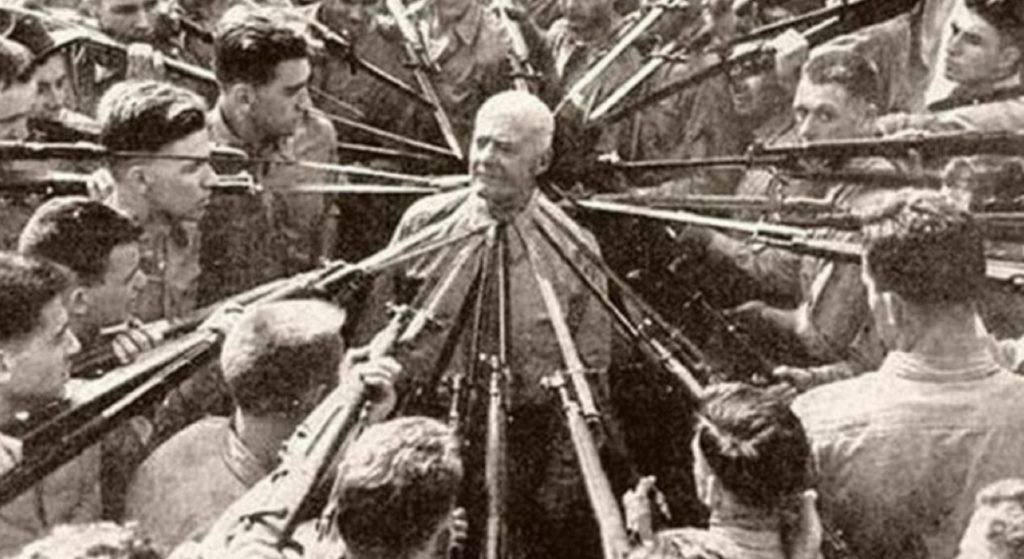
It’s important to note that this type of training is not the norm and should not be replicated without proper training and knowledge. But it’s interesting to know that this type of training existed and that it had its purpose.
Hanging by an Eyelash!
Carving Mount Rushmore, the iconic national monument in South Dakota’s Black Hills, posed incredible challenges and required the workers to endure dangerous conditions that would make OSHA come unglued. The project, led by sculptor Gutzon Borglum, began in 1927 and was completed in 14 years.
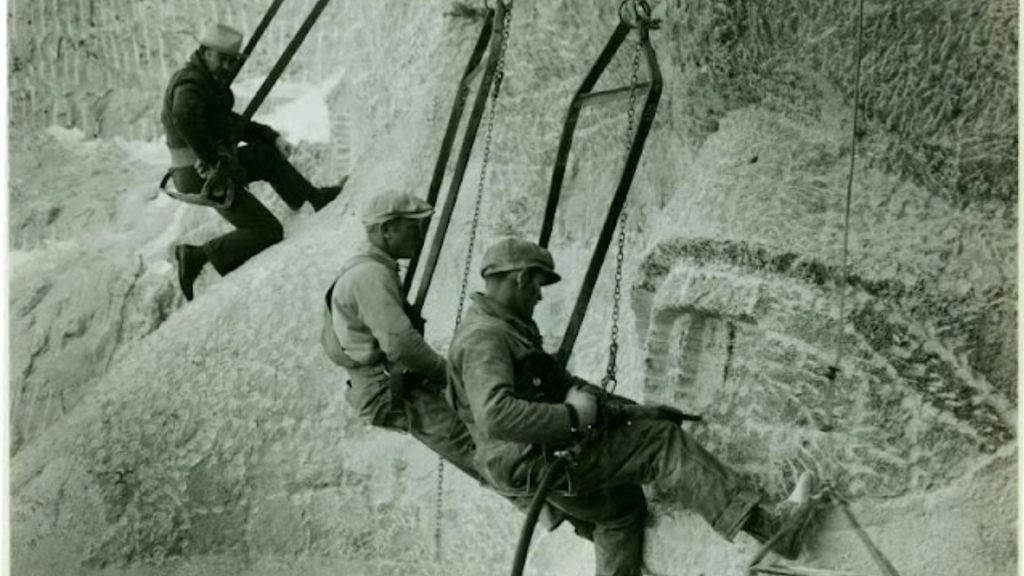
The perilous nature of the work stemmed from the sheer scale of the granite mountain and the extreme weather conditions. Carvers, often suspended from harnesses and scaffolding, faced the constant threat of falling debris and rockslides. Amazingly, none of the workers were killed – or even seriously injured – while carving Mount Rushmore.
Did someone say a customized bed?
Nineteen-year-old Robert Wadlow was a very tall man. He was 8 feet and 7 inches tall, which makes him the tallest person in recorded history! In this picture taken in 1937, we can see him dwarfing his friend in Omaha, Nebraska. But what’s even more amazing is that he grew another 4 inches before his death in 1940!
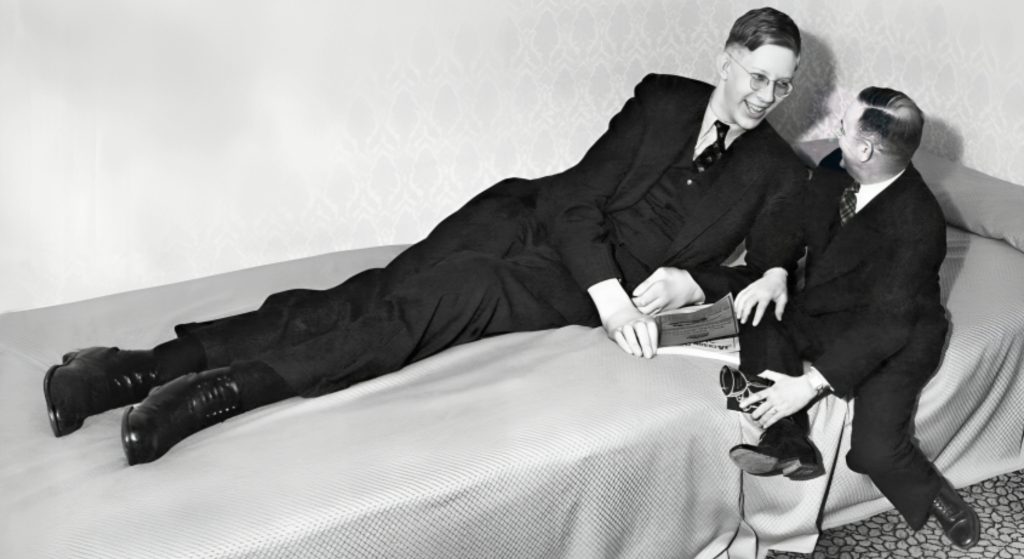
It’s hard to imagine being so tall, and it must have been difficult for Robert to navigate the world. But despite his height, he was able to live a relatively normal life and even had a successful career as a traveling spokesperson for the shoe industry. It’s interesting to see how he used his height to his.
Snapshot in Time: Unbeknownst Mime in Central Park turns out to be the young, undiscovered Robin Williams
In 1974, a photographer named Daniel Sorine was taking pictures of mimes in Central Park. He took lots of photos of different mimes, just for fun. But he didn’t realize that one of the mimes he took a picture of was a young and undiscovered Robin Williams! It took him 30 years to realize that the random photo he took was actually of the famous actor.
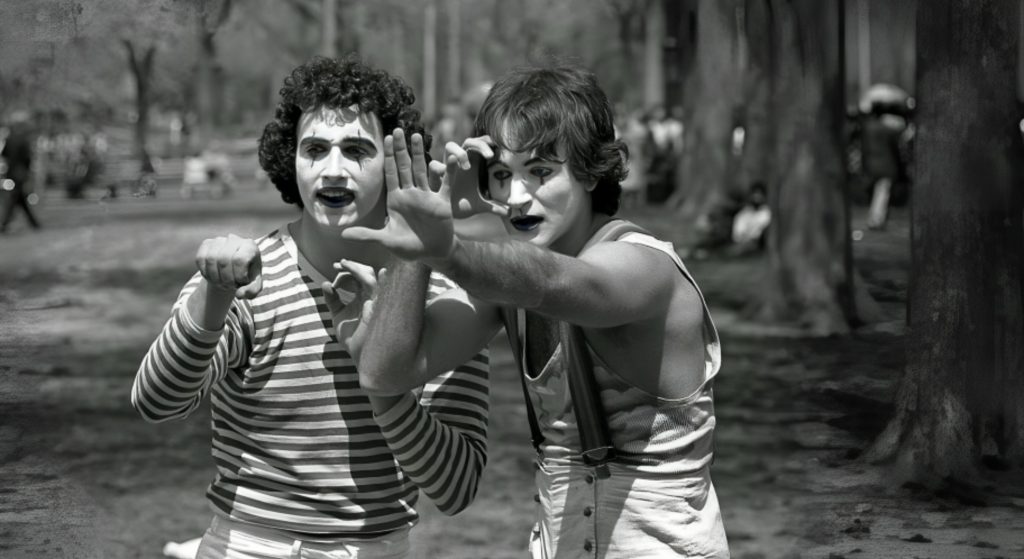
It’s pretty wild to think that a famous person like Robin Williams was just a regular person back in 1974, doing regular things like being a mime in Central Park. It just goes to show you never know who you might be running into and how they might become famous one day. It’s also interesting to think about how pictures can hold memories and how sometimes you don’t realize the significance of a photo until years later.
You’ve Come a Long Way, Baby
Okay, so it was wireless, but how cumbersome and bulky were early cell phones? This weighty contraption is not as convenient as today’s cellphones and certainly won’t fit in your back pocket. The first cell phone, the Motorola DynaTac 8000X, was invented by Martin Cooper. He made communication history when he placed the first-ever cell phone call on April 3, 1973, while standing on a New York City street.
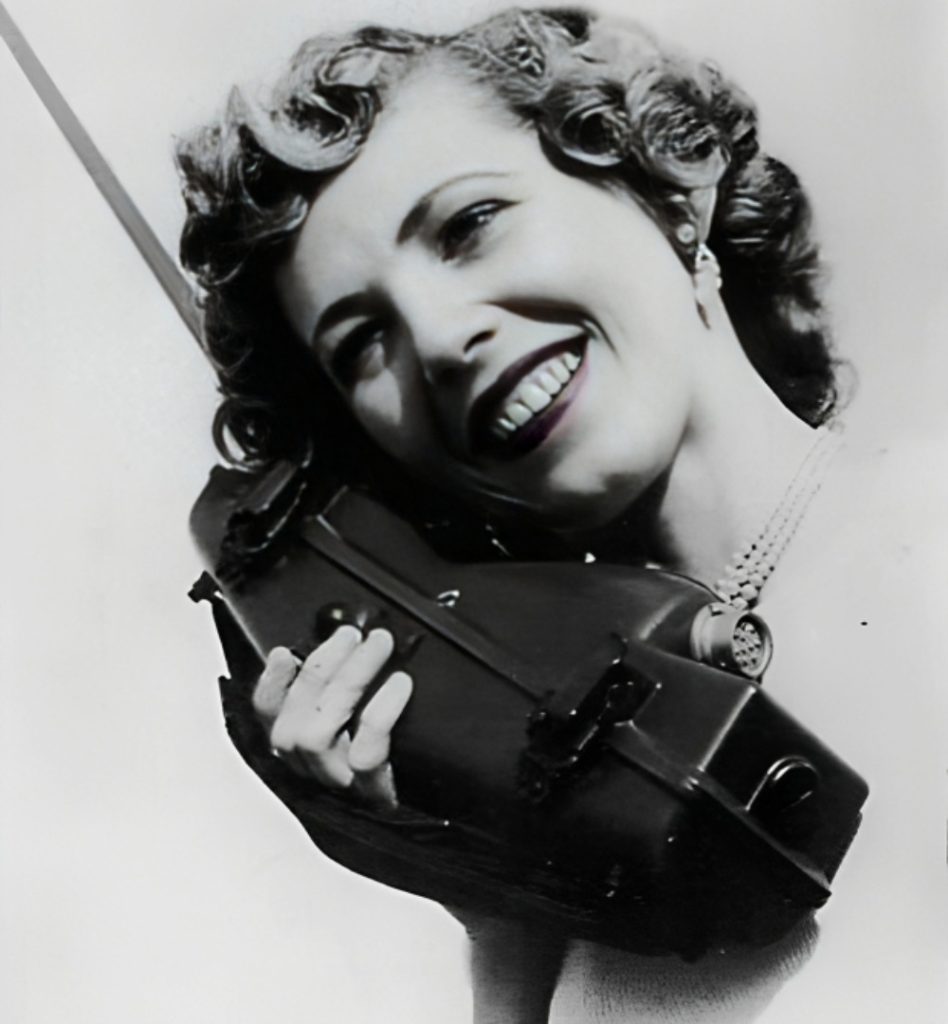
Cooper’s invention was groundbreaking. It allowed for mobility without being tethered to a fixed location by wires and cords. But it came with a cost. In today’s dollars, the DynaTAC of the early 1970s carried a price tag of more than $12,000. Just for reference, minimum wage at that time was $3.35. A person would have to work more than seven months to afford a cellphone.
A Celestial Collision: Ann Hodges Survives Meteor Strike in 1954
In 1954, Ann Hodges became the only known person to be struck by a meteor. The meteorite hit her while she was napping on her couch, leaving her with a large bruise on her hip. Although she was injured, she managed to survive the incident. In this photograph, we can see Dr. Moody Jacobs showing off the bruise left by the meteorite.

Ann Hodges’ story is truly a one-in-a-million chance.
Getting Your Head Examined
In the 19th century, phrenology was an accepted branch of medicine and psychology. Phrenology was founded on the idea that a person’s personality traits, internal characteristics, and mental capacity could be determined by studying the shape, size, and contours of the person’s skull. Phrenology was developed by Franz Joseph Gall who maintained that the different parts of the brain were responsible for distinct faculties.
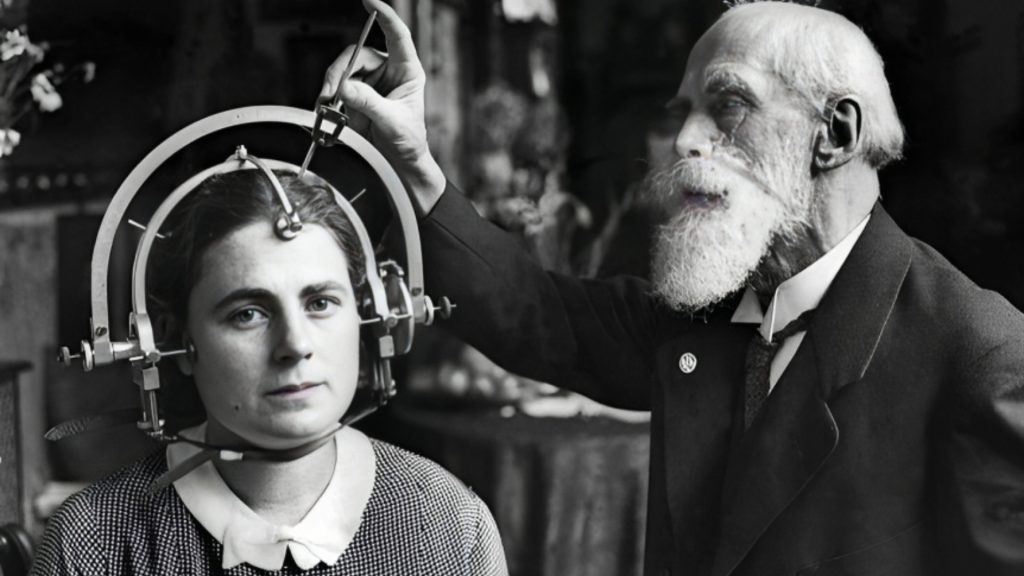
Gall posited that the size and shape of bumps on a person’s skull could provide insight into the person’s morals and intelligence. Of course, none of this was based on empirical evidence. Still, phrenology was widely practiced throughout the 1800s until advances in neuroscience showed just how inaccurate phrenology was. Today, it is a pseudoscience relic of the past.
Rare Color Photograph of B-17 Bombardier in Flight During WWII, c. 1940s
This photograph of a B-17 Bombardier heading towards Germany during WWII is one of the few color images taken from that era. The photograph captures the powerful and imposing aircraft as it soars through the sky. It’s a rare glimpse into the past, showing us what it was like for pilots during the war.
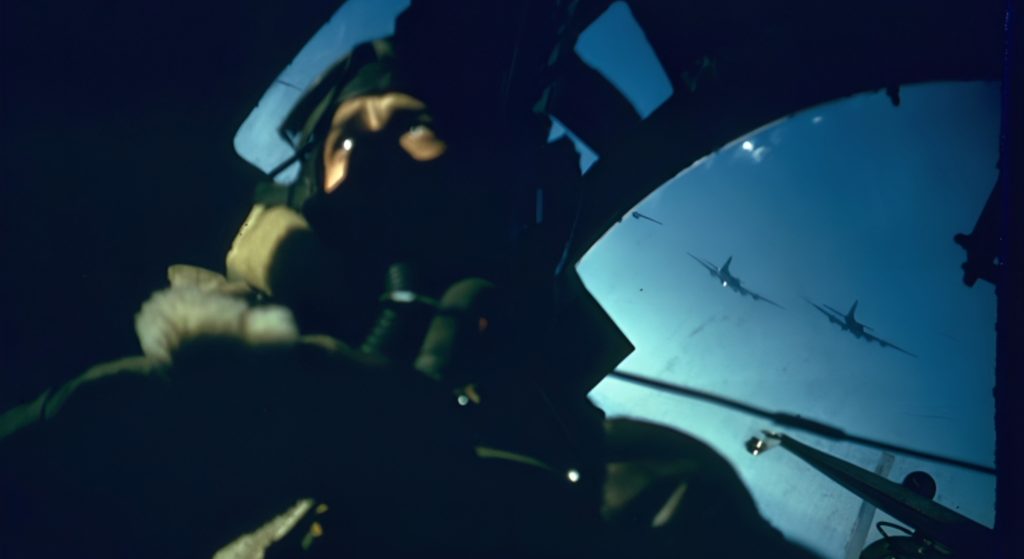
The color also gives us a more vivid and realistic view of the scene, as opposed to the black and white images that were more common during that time.
Speeding into the Future: Young Men Enjoy their Brand New, High-Speed Vehicle in Ohio, 1924
In this photograph, we can see a group of young men enjoying their brand new vehicle in Ohio in 1924. The photograph captures the excitement and joy of the young men as they take their new vehicle for a ride. The vehicle, which traveled at a speed of 25 miles per hour, was considered to be quite fast at the time.
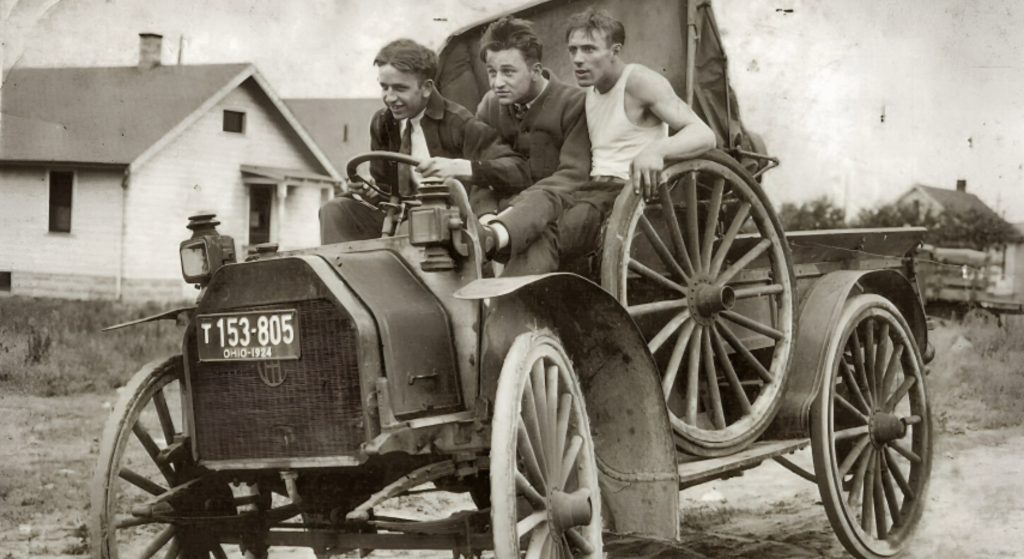
The photograph is a reminder of how much technology has advanced since the 1920s. Vehicles today can travel at much faster speeds than 25 miles per hour.
The Start of Something Great
Long before Michael Jordan, widely regarded as one of the greatest basketball players in history, left his indelible mark on the sport, he was just a kid in Brooklyn in the mid-1960s trying to keep up with the older boys. Born on February 17, 1963, Jordan rose to prominence during his college years at the University of North Carolina, where he played a key role in leading the Tar Heels to the NCAA championship in 1982.
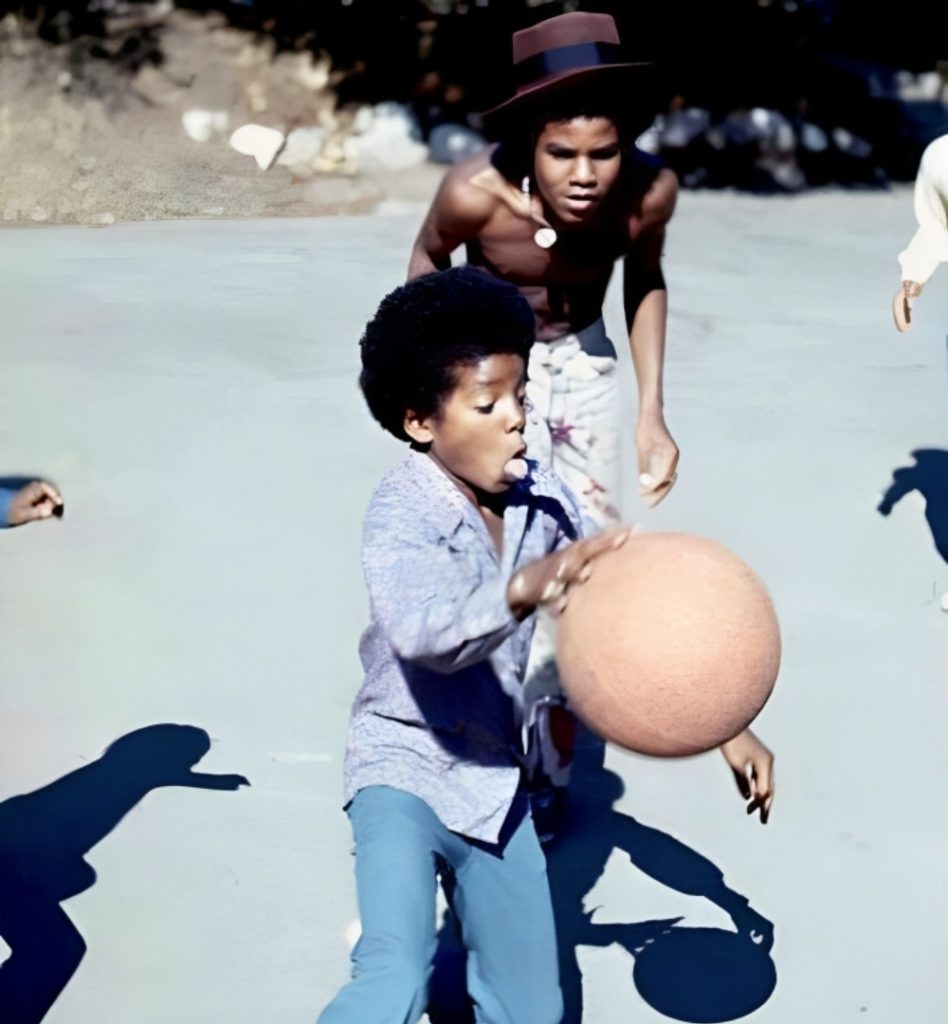
Drafted by the Chicago Bulls as the third overall pick in the 1984 NBA Draft, Jordan quickly became the face of the franchise and a global basketball icon. Jordan’s list of achievements includes five MVP awards, 14 All-Star game appearances, and ten scoring titles. Renowned for his clutch performances, he secured numerous game-winning shots and earned the nickname “Air Jordan” for his gravity-defying dunks.
A Meeting of Icons: Marilyn Monroe and Queen Elizabeth Shake Hands at Film Premiere in London, 1956
In this photograph, we can see the iconic Marilyn Monroe shaking hands with Queen Elizabeth at a film premiere in London in October 1956. Both women were 30 years old at the time. The photograph captures a moment in time when two of the most famous women in the world met. Queen Elizabeth, who was then a young queen, and Marilyn Monroe, who was at the height of her fame, met at the premiere of The Battle of Waterloo.
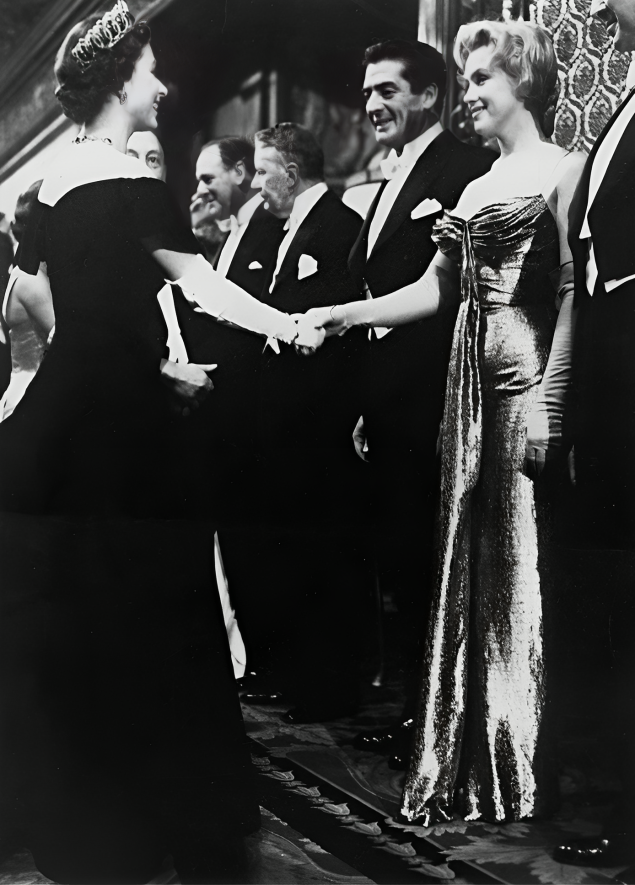
It reminds us that even though Queen Elizabeth and Marilyn Monroe lived in very different worlds, they were both 30 years old at the same time and were able to meet.
1933 Child Safety Seats Had Little to Do with Safety
In 1985, the United States passed laws making seat belt use mandatory, but one company got a head start on the child safety seat business. The Bunny Bear Company introduced their booster seat in 1933. This isn’t your typical safety device. In fact, the purpose of this seat had little to do with safety.
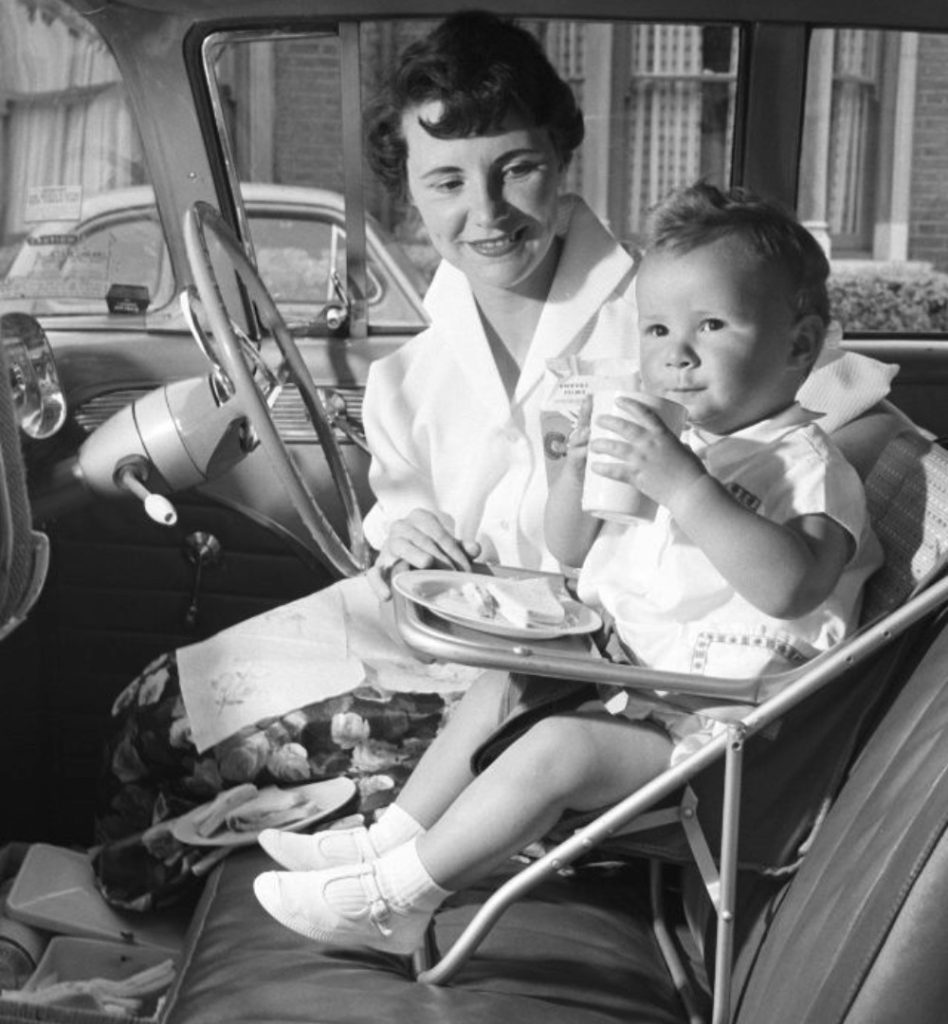
When parents traveled with babies and toddlers prior to 1933, there was nothing to prevent the youngsters from climbing all over the car, distracting the driver and falling to the floor. The purpose of the Bunny Bear Booster Seat was more on keeping youngsters confined and controlled than on keeping them safe. In fact, this car seat was made of a metal frame with a simple strap. The car seat offered little protection in a car accident.

